Lionel’s postwar 44-ton diesels may be the most overlooked O gauge locomotives of the era. Collectors focus, instead, on the firm’s models of F3 cab units by the Electro-Motive Division of General Motors and the Train Master road diesels made by Fairbanks-Morse. Operators also like those powerful diesels as well as the big and small 4-6-4 Hudson steam engines paired with whistling tenders.
All the same, the story behind the different models of the General Electric 44-ton “center cab” diesel-electrics cataloged by Lionel between 1956 and 1958 is worth sharing. It helps postwar enthusiasts gain a more comprehensive look at what Lionel, the most important American toy train manufacturer, was doing in the years after World War II when toy trains were at the peak of their popularity.
Searching for more
The greatest challenge facing notable members of both the Engineering Department and the sales force at Lionel in the 1950s was figuring out how to keep expanding the roster of locomotives. Steam engines, while still popular and entertaining, were becoming less appealing to kids because full-size railroads across North America were giving up on them. The age of steam was gone!
Lionel, like its major rivals in the O and S gauge fields (Louis Marx & Co. and the A.C. Gilbert Co., respectively), had since the late 1940s been turning its attention to models of diesel-electric motive power. Not surprisingly, its designers had followed blueprints and drawings provided by the two dominant players: the American Locomotive Co., and the Electro-Motive Division of General Motors. Cab units, road diesels, and modern switchers from those two manufacturers had joined Lionel’s cataloged lineup on a regular basis between 1948 and 1955. So also had a large and powerful road diesel from a small firm, Fairbanks-Morse.
Where to turn next proved to be the stumbling block for Chief Engineer Joseph Bonanno and his crew as they looked ahead to 1956. They pored over a host of publications about modern railroading and perused annual reports released by railways across the U.S. Model makers and draftsmen observed real trains.
Members of the Engineering Department found some more prototype locomotives to consider, and they likely debated the merits and shortcomings of several as they talked about how to expand Lionel’s list of O gauge engines. Inspiration eventually came after they studied a group of press releases sent by General Electric, an up-and-coming producer of modern diesels and electrics.
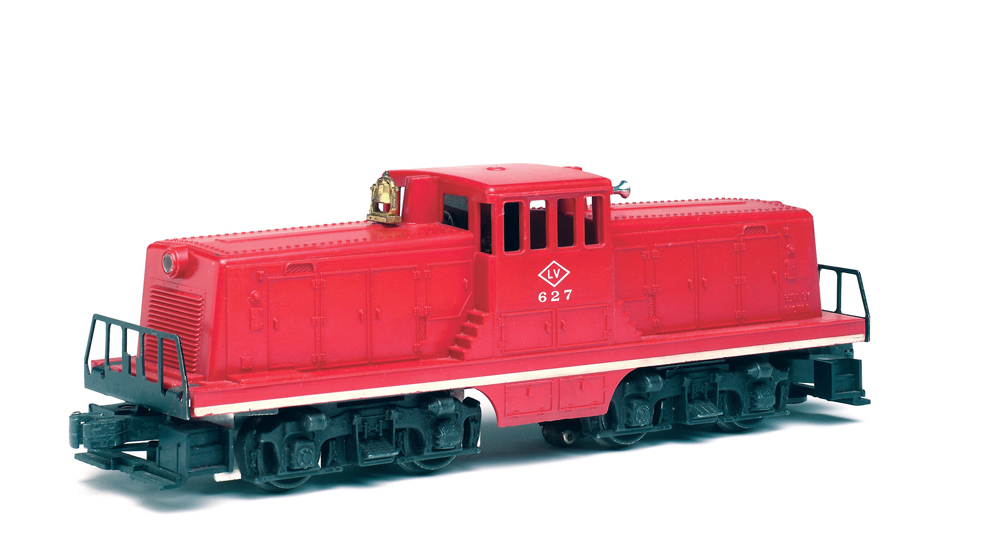
Three newcomers in 1956
The oddest and most idiosyncratic of three new GE locomotives was an 80-ton electric-profile unit ordered by a mining firm in the South American country of Chile. That bulky engine inspired the creation of the No. 520 boxcab.
The most attractive and well-known of the trio was a larger and sleeker electric soon to ply the rails owned by the New York, New Haven & Hartford RR. The EP-5 unit caught the eyes of designers at both Lionel and Gilbert. Each of the firms brought out a striking replica of the New Haven “Jet” for 1956. Lionel’s No. 2350 won over many O gaugers, and it was followed over the next three years by three additional models featuring different paint schemes and railroad names.
The third new locomotive derived from a GE prototype was a diminutive 44-ton center-cab diesel. The history of that curious engine went back almost two decades. In 1937, American railroads and the unions representing engineers and firemen had negotiated a new labor agreement that, among other things, had mandated the presence of a fireman on any locomotive weighing at least 90,000 pounds or 45 tons. In response, GE had developed a model rated at only 44 tons.
Between 1940 and 1956, General Electric built 386 examples of the four-axle diesel units for domestic railroads, industrial concerns, and the armed forces. Principal owners were the Atchison, Topeka & Santa Fe; Boston & Maine; Great Northern; Illinois Central; Milwaukee Road; Pennsylvania RR; and Southern Pacific. Several were exported to various lines and businesses in Europe, Latin America, and the Middle East. Ironically, Lionel introduced its O gauge model of a 44-ton diesel-electric in 1956, which was the year GE discontinued production.
Lionel models in four colors
Once the Engineering Department had fastened on a 44-ton center-cab as a
logical addition to the low-end of the O-27 roster, members began exploring how they could assemble a replica quickly and inexpensively. Their answer involved utilizing existing parts and tooling, mostly from Lionel’s NW2 diesel switcher. Naturally, though, the body shell of the 44-tonner needed to be a new design.
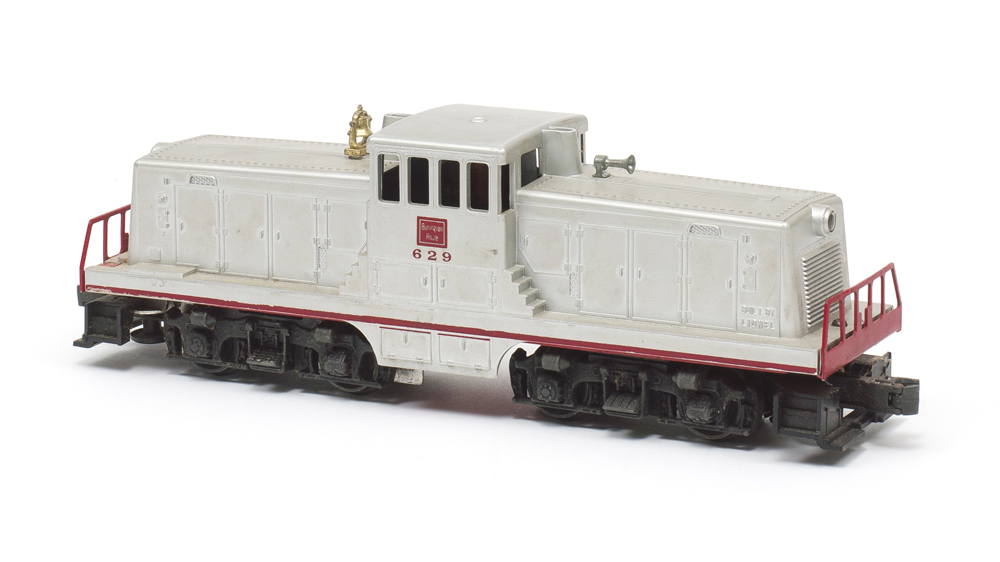
Under the hood, designers called for a single vertically mounted motor. They wanted Magne-Traction on one axle, a three-position reverse unit, and operating knuckle couplers to be standard mechanical components. Feeling compelled to cut production costs, they chose to leave off a functioning horn.
The Lionel 44-tonner made its debut in the noteworthy year of 1956. Men in charge of assembling the group of locomotives, outfits, accessories, and more decided the new engine would be available in four different paint schemes. All four of the railroads represented had indeed owned at least one actual 44-tonner.
The consumer catalog for 1956 introduced Lionel’s new model of “this versatile, practical 400 h.p. locomotive” on pages 4 and 5. Accompanying text declared the GE 44-tonner had “High-impact, high-strength, molded locomotive body!” and noted it measured “Sweeping 11¾” long from coupler to coupler!”
The catalog claimed the 44-tonners were given “the same unique ‘steeple cab’ as the GE prototype” with “complete and accurate” body details. So what if Lionel’s model was grossly oversized. Truth be told, had it been a true scale replica, the dimensions would have approximated those of a motorized unit.
Bold type on page 5 announced the three road names and colors: “No. 627 Lehigh Valley in red and white”; “No. 628 Northern Pacific in black and yellow”; and “No. 629 Burlington in silver and red.” The latter two models came equipped with an operating headlight; the 627 Lehigh Valley lacked that exciting feature.
Artwork made it clear each of the new 44-tonners pulled an O-27 that differed in quality and price. The 627 led a three-car freight set, while the 628 headed a four-car freight. Best of all was the No. 1552, which used a 629 unit painted silver with red hot-stamped details (similar in appearance to the No. 2328 Burlington Route GP7 road diesel) to pulls three matching short passenger cars.
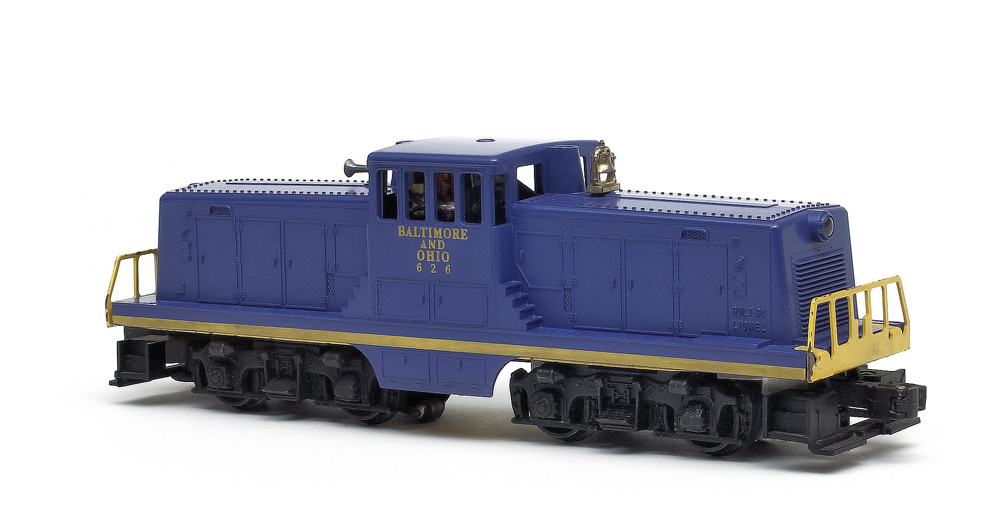
In addition, a fourth model was available in 1956 exclusively as part of a promotional outfit sold through Sears, Roebuck & Co. Not until the following year would the No. 626 Baltimore & Ohio be included in the cataloged lineup.
Back to the LV
Lionel brought back the 627 Lehigh Valley and 628 Northern Pacific 44-tonners for a second and final year in 1957. It also moved the 625 Baltimore & Ohio model straight into the cataloged lineup for this year only. The firm then decided it needed yet another 44-tonner, so it heralded the brand-new No. 625. But in somewhat of a surprise, it selected as the road name the Lehigh Valley.
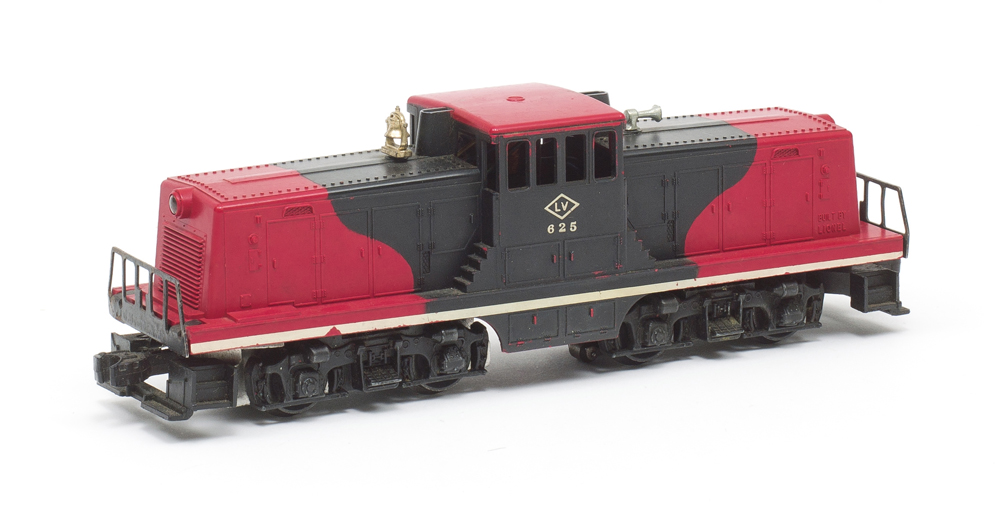
Cutting corners explained why the 625 had an unpainted red plastic shell on its black-painted sheet-metal frame. To gussy up the second 44-tonner named for the line serving the Lionel factory in northern New Jersey, designers specified painting the middle black. Hot-stamped white graphics and a white stripe painted across the lower portion of the body duplicated what had been done with the 627.
Simplicity dictated an ornamental bell and an ornamental whistle on either side of the cab. The 625, unlike the other LV unit, came with a working headlight.
Lionel’s marketing plan for 1957 called for the 625 Lehigh Valley to pull the No. 1571 O-27 five-car freight outfit. Planners relegated the diminutive diesel to the list of separate-sale items a year later before eliminating it from the lineup.
End of the line
From cataloging four 44-tonners as set components or separate-sale items in 1957, Lionel opted to offer only one in 1958. And the second year in which the 625 Lehigh Valley filled a spot in the locomotive roster represented the end of the line for the neat models of a General Electric workhorse in industries and yards.
Although the 625 returned for another year, it no longer headed a train set. In fact, there wasn’t even an illustration of the second Lehigh Valley 44-tonner. A brief description hidden at the bottom of page 11 in the consumer catalog for 1958 was all Lionel could do to spotlight the small diesel, which was priced at $18.95.
Not much of a legacy for a diesel locomotive that filled a vital niche in the line for a couple of years. Yet the five different Lionel 44-tonners deserve to be remembered, especially the hard-to-find 626 B&O and gleaming 629 Burlington.






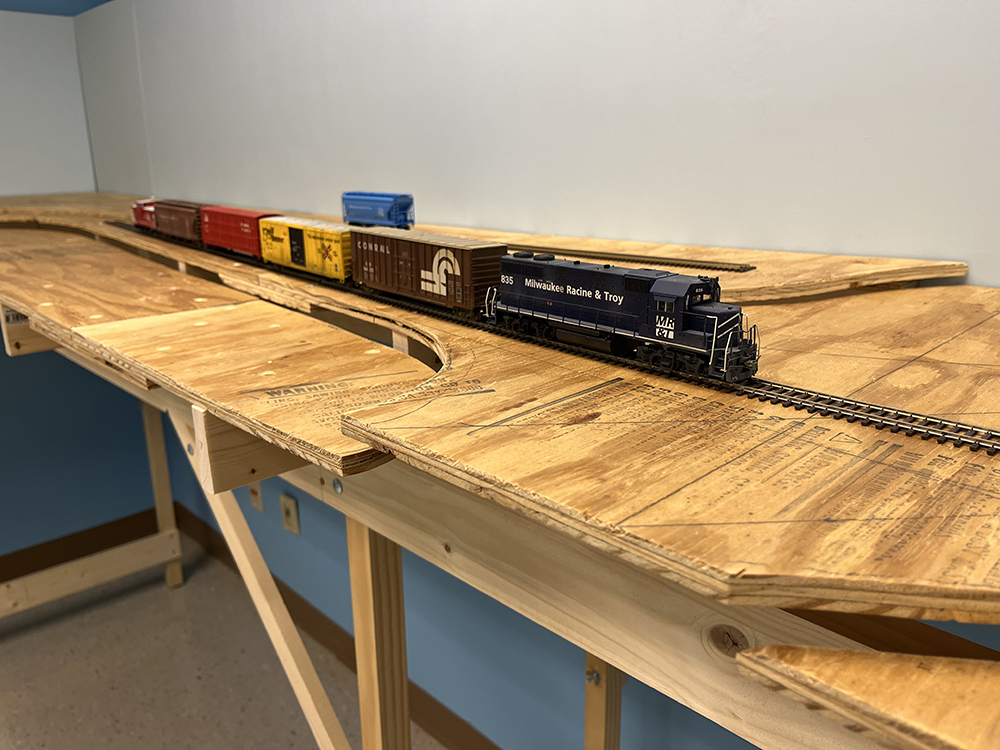
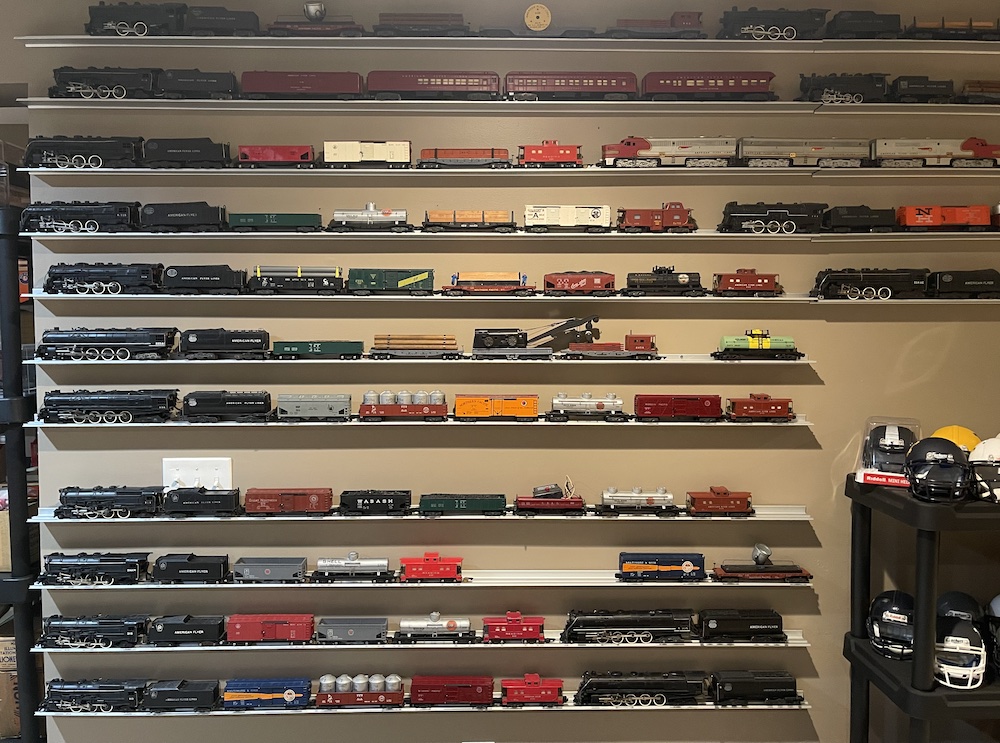

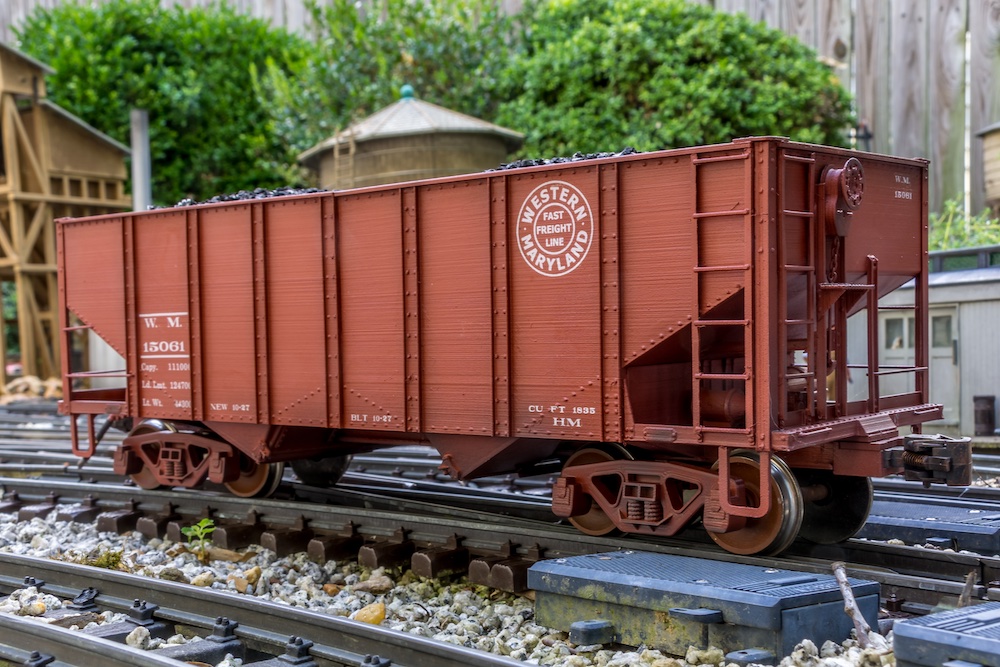




Lionel put EMD Bloomberg trucks under their 44 tonners WRONG!